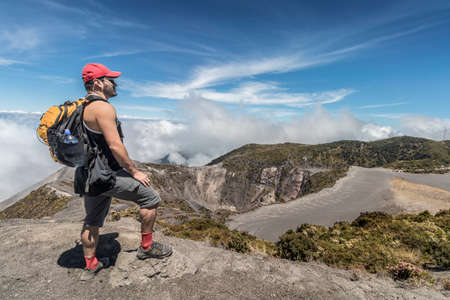Introduction: Embracing the British Landscape
The United Kingdom’s landscapes are a patchwork quilt of ancient moors, rolling downs, wild fells, and whispering woodlands—each corner holding its own secret magic beneath an ever-changing sky. For the solo hiker, venturing out into this tapestry is not just a journey across miles, but a quiet communion with nature’s raw heart. From the windswept heather of the Scottish Highlands to the mist-laden valleys of Wales and the emerald undulations of England’s Lake District, every step offers a new mood and memory. The land here is alive with stories; it cradles you in silence, then tests your resolve with sudden squalls or tangled bracken. Walking alone across these storied hillsides, one feels both small and infinite—a solitary figure finding kinship with lichen-stained stones, skylarks overhead, and the persistent pulse of rain on earth. In Britain, hiking becomes less about conquering peaks and more about yielding to the wildness within and without; it is an act of belonging to something greater, a soulful dialogue between wanderer and wild land.
Distinctive Terrain: From Moorlands to Coastal Paths
Wandering alone across the UK’s diverse landscapes is an invitation to encounter nature in its purest forms—each region offering a fresh perspective, each footfall connecting you with the living history beneath your boots. The patchwork of rolling dales, brooding moorlands, rugged highlands, and windswept coastal paths creates a symphony of environments that beckon the solo hiker with both beauty and challenge.
The North York Moors unfold like a purple sea when heather is in bloom, but beneath the surface lies treacherous peat bogs and ever-shifting weather. In contrast, The Lake District weaves together craggy fells and glassy waters—its steep ascents and narrow ridges demanding careful navigation. Venture north, and the Scottish Highlands rise in wild majesty: mountains cloaked in mist, valleys echoing with ancient tales, where solitude is profound and conditions can change in a heartbeat.
Along the coastline, trails such as the South West Coast Path trace dramatic cliffs above pounding surf. Here, breathtaking vistas are matched by exposed paths and sudden drops—a test of nerve as much as stamina. Every landscape writes its own rules for those who journey alone.
| Landscape | Key Features | Main Challenges for Solo Hikers |
|---|---|---|
| Moorlands (e.g., Dartmoor) | Bogs, wide-open spaces, sudden mists | Poor visibility, disorientation, wet underfoot |
| Dales (e.g., Yorkshire Dales) | Rolling hills, limestone pavements, rivers | Steep climbs, slippery stones after rain |
| Highlands (e.g., Scottish Highlands) | Mountains, remote glens, lochs | Isolation, unpredictable weather, navigation difficulties |
| Coastal Paths (e.g., South West Coast Path) | Cliff edges, sea views, exposed stretches | Strong winds, erosion, limited shelter |
This vast tapestry of terrain ensures that no two walks are alike. Each step taken across moor or mountain invites awe—and demands respect for the land’s subtle dangers. For those hiking solo in Britain, understanding these distinctive terrains is not just practical; it is essential to experiencing their full enchantment safely.

3. Weather and the Elements: The Unpredictable British Mood
There is a certain poetry in the British weather—a moody unpredictability that can transform a solo hike into an ever-shifting story. The UK’s climate is famously capricious, with days that begin under brilliant blue skies and quickly surrender to brooding clouds and gentle, persistent drizzle. For those exploring the fells of the Lake District or rambling across the South Downs, this means every outing holds its own surprises. Unlike the blazing consistency of Mediterranean summers or the sharp extremes found elsewhere, the British elements are subtle yet relentless. A sudden gust from the Atlantic might sweep across open moorland, carrying with it a fine mist that clings to skin and seeps into clothing. The iconic grey skies—sometimes comforting, sometimes foreboding—are more than a backdrop; they shape each moment on the trail.
For solo hikers, this unpredictability is both challenge and companion. The need for layered clothing becomes apparent as temperatures shift within minutes, and waterproofs are seldom left behind—even in June. Navigation grows more demanding when thick fog rolls over ancient stone walls or when landmarks dissolve into sheets of rain. There’s an intimacy in experiencing these elements alone: every drop, every wind-stirred leaf feels magnified, demanding both respect and preparedness. This ever-changing weather asks hikers not just to read forecasts but to understand patterns—to watch the sky’s moods and listen for distant rumbles echoing off hillsides. Only then can one fully appreciate the character of the British outdoors, where every hike is shaped by nature’s own temperament.
4. Navigational Hurdles: Footpaths, Fells, and Right to Roam
The UK’s landscape is a living tapestry, woven with ancient footpaths and windswept fells that invite the solo hiker into its embrace. Yet, navigating this terrain is not always as straightforward as it seems. While the countryside appears inviting, its network of paths carries centuries-old traditions—and quirks—that present unique challenges for those venturing alone.
Historical Footpath Traditions
The story of Britain’s public rights of way is deeply rooted in its rural history. Many routes trace the steps of shepherds, pilgrims, or villagers walking to market, maintained through generations by custom rather than decree. Today, these footpaths are protected by law but remain embedded in hedgerows, across fields, and over moorland—sometimes barely more than a trodden line through the grass.
Waymarking Quirkiness
For the solo hiker, waymarking can be both a blessing and a riddle. Waymarks range from clear National Trail acorns to humble yellow arrows on fence posts. In some regions, markers fade into the mist or vanish altogether at field boundaries or where land use changes. The table below highlights common types of waymarks and their potential challenges:
| Waymark Type | Description | Common Challenges |
|---|---|---|
| National Trail Symbols | Acorns (England/Wales), Thistle (Scotland) | Generally reliable; sometimes obscured or absent in remote areas |
| Coloured Arrows | Yellow (footpaths), Blue (bridleways), Red (byways) | May fade over time; occasionally missing at junctions |
| Stone Cairns & Posts | Piles of stones or upright wooden posts on open fells/moors | Easily lost in poor visibility or if disturbed by livestock/weather |
| Kissing Gates & Stiles | Physical access points marking route continuity | Not always signposted; may blend into surroundings |
The Right to Roam: Freedom and Responsibility
The UK’s unique “Right to Roam” laws grant walkers remarkable freedom to explore open access land—commons, heaths, downs, and mountain slopes—particularly in England and Wales. But this right comes with responsibilities. Respect for farmers’ fields, closing gates behind you, leaving no trace, and understanding seasonal restrictions such as lambing or grouse shooting are integral to preserving this delicate balance between freedom and stewardship.
Navigating Britain’s countryside is an act of trust: in yourself, in your map-reading skills, and in the centuries-old compact between wanderer and landscape. Each stile crossed is a threshold into shared history—a reminder that every footfall treads both earth and tradition.
5. Wildlife Encounters and Natural Hazards
Wandering alone across the UK’s diverse landscapes, one is never truly alone. The gentle bleating of sheep, their watchful eyes following your every step, becomes a familiar chorus on windswept hillsides. Sometimes, a sudden flash of feathers—perhaps a red grouse erupting from the heather or the haunting silhouette of a barn owl at dusk—reminds you how closely nature observes your journey. These encounters lend an unmistakable sense of wonder to solitary hikes, weaving stories that linger long after boots are muddied and packs unpacked.
Yet, the terrain itself can be as much a companion as it is a challenge. Hikers must tread carefully across boggy moorlands where the ground trembles beneath each cautious step; here, the seemingly solid earth can swallow boots whole, leaving only ripples in the moss behind. Stiles—those quirky wooden ladders and stone steps—dotting ancient hedgerows serve both as obstacles and charming markers of rural passage, often slick with morning dew or stubbornly wedged in mud after rain.
Perhaps most daunting is the sudden arrival of mist. One moment, the path stretches clear before you; the next, all dissolves into a pearly haze where sound is muffled and landmarks vanish. In these moments, even seasoned ramblers can lose their bearings, realising how quickly weather shifts across the fells and dales. Stories abound among walkers: a hiker guided by distant sheep bells through fog on Dartmoor, or another who found solace in the rhythmic croak of ravens high above Snowdonia when the trail disappeared from view.
Such tales are not merely warnings but reminders of the living character of Britain’s countryside. Each encounter—whether with wildlife or wild weather—becomes part of your own narrative, shaping every step taken under wide skies and amid ancient stone walls.
6. Heritage and Human Connection on Solo Trails
Wandering alone across the patchwork of British landscapes, a solo hiker quickly learns that the land is more than just moors and mist. Every ancient stone wall, worn down by centuries of weather and footsteps, tells its own quiet story—a boundary once fiercely guarded, now a gentle guide across wild fields. These enduring walls are both obstacles and companions, demanding a respectful detour or offering a place to rest, backs pressed to lichen-covered stones while the wind carries distant birdsong.
And then there are the bothies: humble shelters nestled in remote corners of Scotland, Wales, and northern England. To stumble upon one after hours of rain-soaked rambling is to discover a living relic—an invitation from generations past to pause and reflect. The smoky scent of past fires lingers within their cold stone walls, mingling with the hopeful scratchings of names and dates left behind by fellow wanderers. Here, solitude softens as you feel yourself part of an unbroken chain of explorers who have sought refuge from storm or silence.
Yet the greatest surprises often come from crossing paths with locals—farmers mending fences at dawn, or villagers tending flowers beside ancient churches. Regional hospitality in the UK is subtle but deeply rooted; an unexpected cup of tea on a drizzly day or simple directions offered with a wry smile can be a balm for weary spirits. But these encounters also require openness and trust, reminding solo hikers that navigating cultural nuances is as vital as conquering muddy footpaths.
In these moments—leaning against a weathered wall, warming yourself by a bothy’s fire, sharing laughter with strangers—you find that hiking alone does not always mean being alone. The land itself holds memory and welcome, offering comfort in its constancy even as it challenges your resolve.
7. Preparation and Mindfulness: Tips for Safe Wandering
As the British landscape unfurls its wild moors, tangled woodlands, and rolling fells, those who venture alone must tread with both care and curiosity. The seasoned solo hiker knows that success on these storied paths is born from thoughtful preparation and a mindful spirit—an approach shaped by generations of walkers who’ve learned to read the land as one might a weathered map.
Planning: The British Way
Before setting out, it’s wise to familiarise yourself with your chosen route using reliable Ordnance Survey maps, a staple in every British rambler’s kit. Local footpaths and bridleways can be deceptively winding or overgrown; always check recent reports or speak to locals for up-to-date advice. Consider the fickle UK weather—mist can descend without warning on Dartmoor or the Pennines, so plan shorter routes in winter months and build in extra time for changes in condition.
Gear: Prepared for All Seasons
The mantra here is: “There’s no such thing as bad weather, only unsuitable clothing.” Waterproof boots are essential for boggy dales and unpredictable showers, while a good-quality cagoule will keep you dry amid sudden downpours. Layering is key; temperatures shift quickly between sunlit valleys and breezy ridges. Don’t forget a flask of tea—nothing lifts spirits like a warm cuppa when clouds gather overhead.
Mental Readiness: Walking with Awareness
British hikers often speak of ‘keeping your wits about you’—a gentle reminder to stay alert but also present. Watch your footing on muddy stiles, listen for the call of curlews across the marshes, and pause to read waymarkers carved into ancient stone. Trust your instincts; if a path feels unsafe or visibility drops, turn back without hesitation. There’s quiet wisdom in knowing when to push forward and when to seek shelter in a welcoming village inn.
Above all, solo wandering in the UK is an invitation to connect—with nature, history, and your own sense of resilience. Through careful planning and mindfulness, each journey becomes more than a walk; it’s a conversation with the land itself—a tradition cherished by British ramblers for generations.


